Sigma S 60-600 mm f/4.5-6.3 DG OS HSM
8. Vignetting
| Canon 50D, 60ámm, f/4.5 | Canon 50D, 60ámm, f/5.6 |

|

|
| Canon 50D, 100ámm, f/5.0 | Canon 50D, 100ámm, f/5.6 |

|

|
| Canon 50D, 200ámm, f/5.6 | Canon 50D, 200ámm, f/8.0 |

|

|
| Canon 50D, 300ámm, f/5.6 | Canon 50D, 300ámm, f/8.0 |

|

|
| Canon 50D, 400ámm, f/6.3 | Canon 50D, 400ámm, f/8.0 |

|

|
| Canon 50D, 600ámm, f/6.3 | Canon 50D, 600ámm, f/8.0 |

|

|
In the case of this type of detector vignetting problems can be called negligible. At 60 mm focal length and the maximum relative aperture the level of this aberration amounts to just 13% (-0.39 EV) and it decreases to 6% (-0.18 EV) on stopping down the aperture to f/5.6.
Please Support UsIf you enjoy our reviews and articles, and you want us to continue our work please, support our website by donating through PayPal. The funds are going to be used for paying our editorial team, renting servers, and equipping our testing studio; only that way we will be able to continue providing you interesting content for free. |
- - - - - - - - - - - - - - - - - - - - - - - - - - - - - - - - - - - - - - - - - - - - - - - -
An even better situation can be observed at 100 mm where, at the maximum relative aperture, the vignetting is 10% (-0.31 EV) and then it decreases to 5% (-0.16 EV), on stopping down the aperture to f/5.6.
Very similar results you get at 200 and 300 mm where, by f/5.6 the vignetting is, respectively, just 9% (-0.29 EV) and 10% (-0.29 EV).
A slight increase of the aberration described here can be noticed at 400 mm where, at the maximum relative aperture, it amounts to 16% (-0.49 EV) and then decreases to 6% (-0.18 EV), on stopping down the aperture to f/8.0.
The highest chances to notice vignetting on the APS-C/DX sensor you get at the maximum focal length where, by f/6.3, it reaches 24% (-0.80 EV). By f/8.0 and f/11.0 it already decreases to imperceptible values, being respectively 11% (-0.33 EV) and 6% (-0.17 EV).
Now let’s check how the situation changes as you progresses to full frame – appropriate photos you can find below.
| Canon 5DáIII, 60ámm, f/4.5 | Canon 5DáIII, 60ámm, f/5.6 |

|

|
| Canon 5DáIII, 100ámm, f/5.0 | Canon 5DáIII, 100ámm, f/5.6 |

|

|
| Canon 5DáIII, 200ámm, f/5.6 | Canon 5DáIII, 200ámm, f/8.0 |

|

|
| Canon 5DáIII, 300ámm, f/5.6 | Canon 5DáIII, 300ámm, f/8.0 |

|

|
| Canon 5DáIII, 400ámm, f/6.3 | Canon 5DáIII, 400ámm, f/8.0 |

|

|
| Canon 5DáIII, 600ámm, f/6.3 | Canon 5DáIII, 600ámm, f/8.0 |

|

|
This time the vignetting makes itself felt, a fact we suggested already in the previous chapter while describing the truncation of light circles. What’s interesting, the most serious problems you can see at the shortest focal length where the brightness loss in frame corners amounts to as much as 49% (-1.97 EV). Stopping down is able to reduce that problem but rather slowly for a telephoto lens. By f/5.6 you get still a significant result, that of 33% (-1.20 EV), by f/8.0 it decreases to 19% (-0.60 EV) and only by f/11 it approaches an imperceptible level (12% and -0.36 EV).
After passing to 100 mm the situation improves sharply because at the maximum relative aperture we lose 27% of light (-0.92 EV). By f/5.6 the vignetting decreases to 19% (-0.60 EV), and by f/8.0 it is further reduced to an imperceptible level of 5% (-0.15 EV).
Similar results you see by 200 mm where, by f/5.6, the vignetting amounts to 31% (-1.06 EV), and by f/8.0 and f/11.0 it drops respectively to 12% (-0.37 EV) and 5% (-0.16 EV).
With the increase of the focal length the vignetting increases as well. At 300 mm and by f/5.6 that aberration reaches 34% (-1.24 EV). On stopping down the aperture to f/8.0 you can limit it to 16% (-0.51 EV), and by employing f/11.0 you can make it disappear practically completely (8% and -0.25 EV).
At 400 mm and by f/6.3 vignetting reaches 37% (-1.34 EV), and then it drops to 20% (-0.63 EV) on stopping down the aperture to f/8.0 and to 10% (-0.32 EV) after employing the f/11.0 relative aperture.
The maximum focal length and maximum relative aperture brightness loss amounts to 39% (-1.44 EV). By applying f/8.0 you can reduce that aberration to a level of 21% (-0.67 EV). By f/11.0 it disappears practically completely, reaching just 10% (-0.29 EV).
In this category the Sigma is defeated by lenses with a lower zoom ratio. As you see there are no miracles and you can’t avoid some limitations of this kind of equipment, especially if you want to keep sensible dimensions of the whole instrument. A noticeable curbing of vignetting on full frame would mean the increase of the size of the lens and it’s clear Sigma wanted to avoid it. Perhaps they assumed that this type of lens is going to be used with the APS-C/DX sensor most often and on that sensor the brightness loss is hardly disturbing.
| Canon 5D Mk III, 60ámm, f/4.5 |
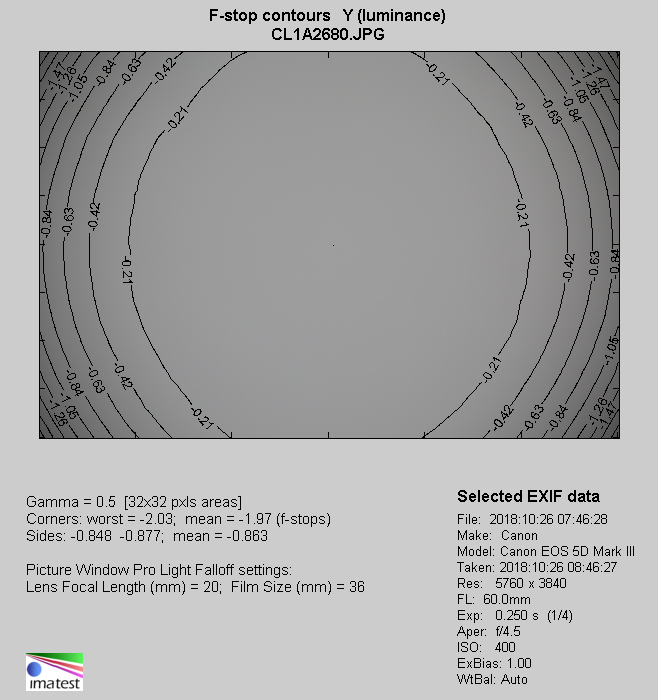 | Canon 5D Mk III, 100ámm, f/5.0 |
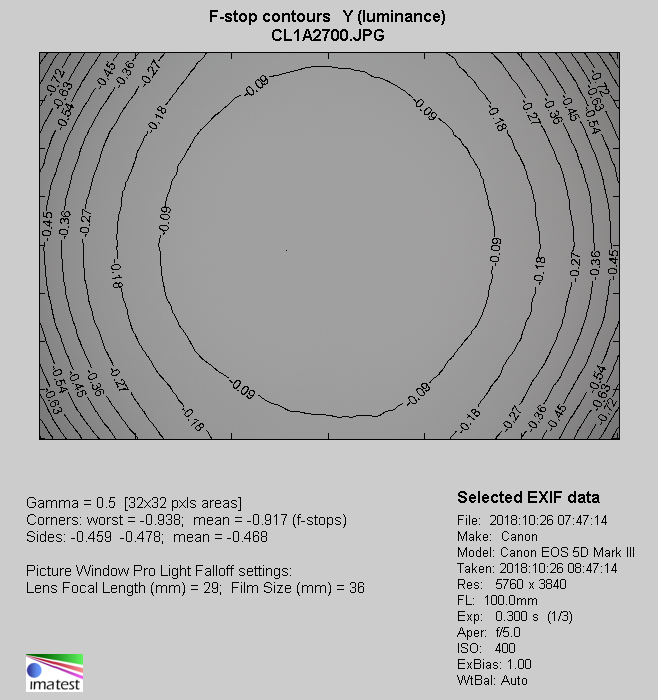 |
| Canon 5D Mk III, 200ámm, f/5.6 |
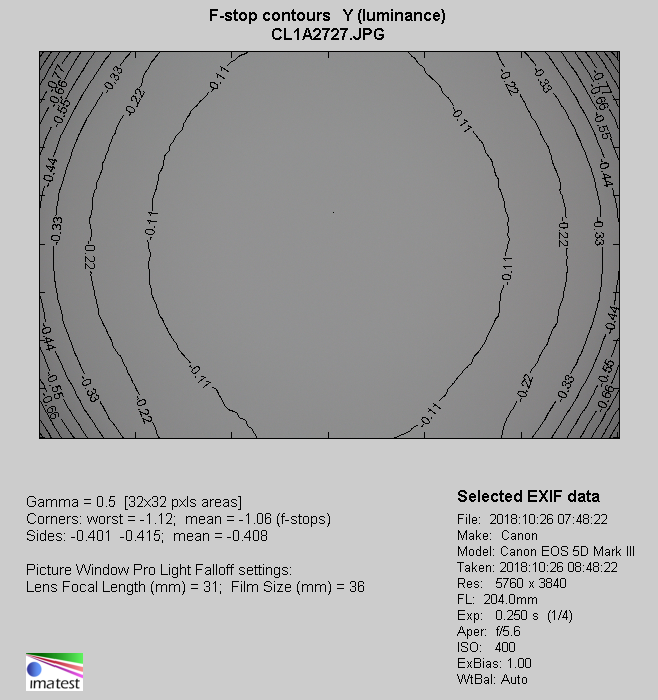 |
| Canon 5D Mk III, 300ámm, f/5.6 |
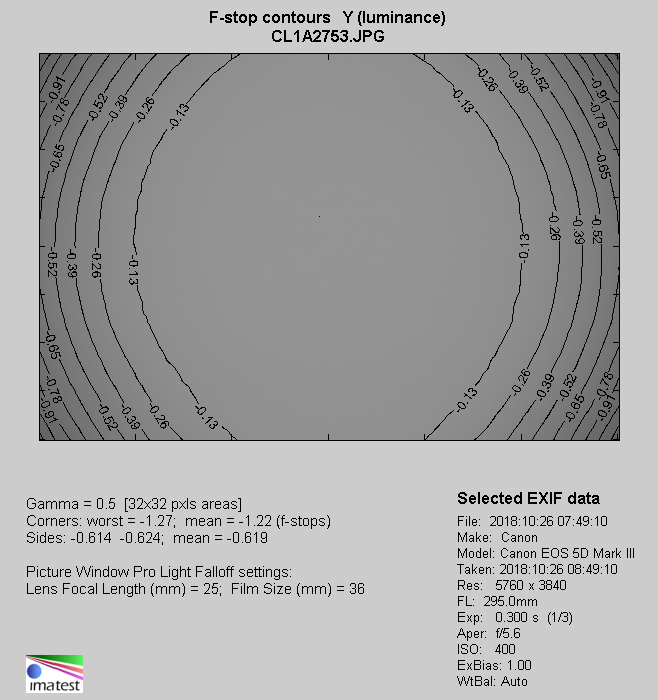 |
| Canon 5D Mk III, 400ámm, f/6.3 |
 |
| Canon 5D Mk III, 600ámm, f/6.3 |
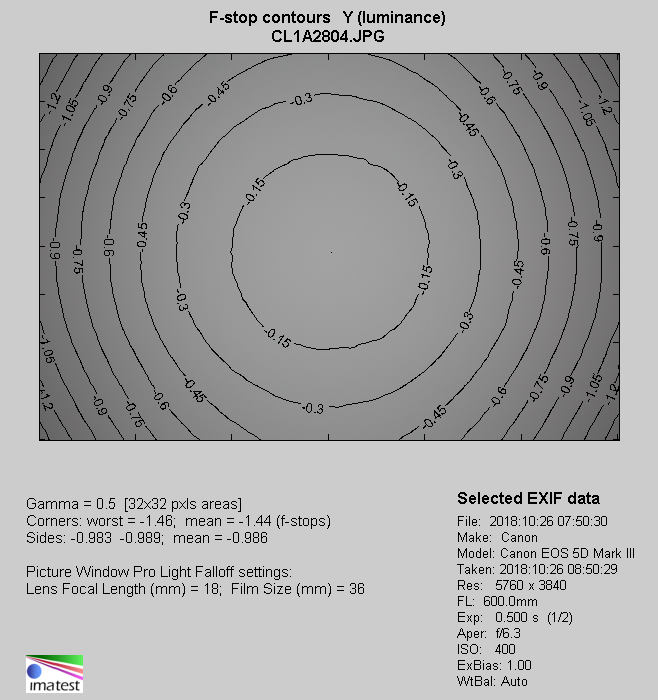 |






